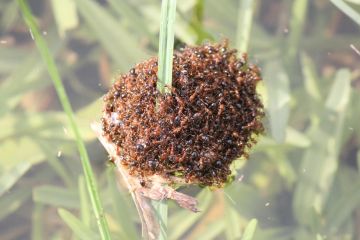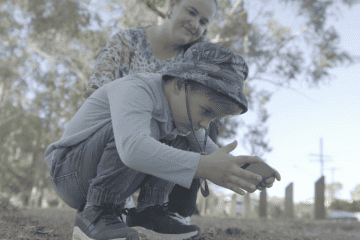The Invasive Species Council says the federal government’s response to the fire ant inquiry is disappointing and seems to miss the point of the senate’s important recommendations.
The government has finally released its response, following the 2023 senate inquiry which exposed numerous shortcomings of the program.
‘The evidence at the senate inquiry was clear that the current level of resourcing is not sufficient to eradicate this super pest,’ Invasive Species Council Advocacy Manager Reece Pianta said.
‘This was an opportunity for the government to ensure fire ant eradication was on track. Instead, they hit the pause button until after the next federal election at the end of 2025. This is extremely disappointing.
‘If allowed to spread, each year fire ants will burden our health system with 650,000 extra medical appointments and over $2 billion in economic costs.
‘Fire ants already threaten koala sanctuary areas in Queensland and the Threatened Species Commissioner has warned iconic echidna, platypus and turtle populations could decline from fire ant infestations.
‘The senate recommended an urgent review of funding and resourcing, yet the federal government is holding back on this until after next year’s election.
‘They have also refused recommendations for a more robust fire ant suppression program. This shows they’ve failed to grasp the urgency of scaling up suppression work. Right now numbers are skyrocketing due to a lack of personnel, bait and equipment for suppression.
‘There also hasn’t been an efficiency and effectiveness review since 2019 and now they are putting the next one off to 2025. This is not a serious response to a serious problem.
‘We are calling for an urgent review to be completed by the end of February 2025. If we wait 14 months we will fail our environment, communities and farmers.
‘In the lead-up to the federal election, we are calling on all parties to increase fire ant eradication and suppression resources and commit to long-term funding of the program, beyond 2027 when the current funding runs out.’
Media Inquiries: (02) 8006 5004
Images, maps and other fire ant multimedia to accompany this story are available here.
Background:
- The senate inquiry report titled ‘Red imported fire ants in Australia: Don’t let this come back to bite us’ contained 10 recommendations and received unanimous support from the cross-party Senate committee.
- The recommendations call for:
- An alternative independent agency or commission for fire ant eradication program delivery.
- A rapid review of current funding to ensure it is sufficient and uninterrupted to get the job done.
- Greater eradication program transparency and a public awareness campaign.
- An increased investment in research on emerging fire ant eradication techniques.
- More resources for public self-treatment of fire ants in the infestation zone and increased compliance to control fire ant movements in freight.
- The Invasive Species Council submission to the senate inquiry into fire ants in Australia is available here.
- A recent report, released by the Australia Institute, estimates that, if fire ants are allowed to spread, every year they could cause six deaths, trigger 116,000 medical visits. Households could be hit with an annual bill of $188 million, if they are not eradicated.
- Fire ants can be lethal to humans, are expected to have a $2 billion per year impact on Australia’s economy if they get out of control, will devastate wildlife, cut agricultural output by up to 40% and may cause over one hundred thousand extra medical appointments each year.
- A study of fire ant’s likely impact on 123 species in South East Queensland predicted population declines in about 45% of birds, 38% of mammals, 69% of reptiles, and 95% of frogs.
- Fire ants can form rafts during flood events, stowaway in freight or soil or spread by Queen ant flights of around 5 km.
- Fire ants have been successfully eradicated in Sydney, Fremantle, Gladston and contained to south east Queensland. Outbreaks in NSW, Toowoomba and the Sunshine Coast prove that eradication is the only permanent solution.
- A comprehensive government study from 2021 found that between $200 and $300 million annually would be required over the next 10 years or Australia would face at least a $2 billion cost per year from fire ants forever.
- Despite this only $133 million was provided for fire ant eradication last financial year.
- Fire ant eradication is being led by the Queensland government but is funded by all Australian governments because fire ants are a threat to the whole country.
- Fire ants came into Australia in the late 90s in freight from the United States, they were found in 2001. Fire ants are originally from South America.
- Fire ants have spread across most of the southern United States, and are spreading in China at a rate of about 80 km per year.
- Almost all of Australia is climatically suitable for fire ants.








